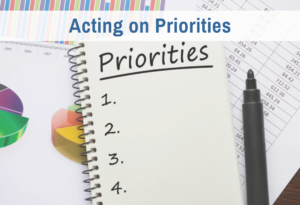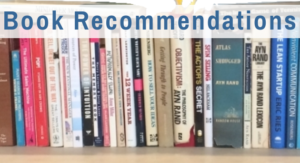In a previous article, I argued that accepting reality gets you serenity. In this article, I will make a case that embracing causality gets you happiness. More exactly, my point is that consciously embracing the role of the causal agent of your own happiness is necessary to achieve an enduring happiness.
Happiness, like every other phenomenon in the world, is the result of causal factors. Part of accepting reality is recognizing those causal factors at work, including your place in the causal chain.
I assume it’s obvious that evading the consequences of your action or expecting effects without causes would be irrational and would have bad existential results. But achieving happiness requires something more.
If you want to be happy, you need to do more than just accept causality when it’s staring you in the face. A passive process of acceptance is not enough. By “embracing causality,” I mean you need to actively go out of your way to figure out what the short- and long-term consequences are going to be for any action you may take. On that basis, you then set goals and initiate action that you believe will lead to your short-term and long-term success and happiness.
If you are unhappy, embracing causality includes figuring out how you have contributed to your own unhappiness, however innocently, and then adjusting how you go forward in life so that you set yourself up for the reverse. If that requires you to pursue challenging goals, change habits of a lifetime, or rethink long-held assumptions, you decide, “So be it.” Such work is justified when your happiness is at stake.
I don’t mean to make this sound easy and obvious. It’s not. Sometimes it seems like there is a significant conflict between success in the short-term versus the long-term. It can seem that you need to take action that will make you miserable now, which is justified because you’ll be happy in some distant future.
That is not my view. Some mythical future happiness is not happiness. Happiness is a durable state that includes positive affect 80-90% of the time, on whatever time scale you are considering. Happiness is consistent with temporary setbacks, but not with an extended drought of pleasure in your life.
I do not believe in sacrificing the short-term to the long-term or vice versa. What is needed to be happy is to integrate the short- and long-term.
That takes work, a specific kind of mental work. In particular, three mental levers need to be operated just so if you want to be happy: directing cognition, setting an intention, and initiating action. This is a huge topic. In this article, we’ll just touch on the considerations necessary for each of these processes to lead to happiness rather than suffering.
I will discuss them in reverse order — action first, then intention, then cognition, which is from simplest to most complex.
Initiating action without traveling the road to hell
When people say, “The road to hell is paved with good intentions,” they usually mean good intentions that were not acted upon.
The obvious point here is well known. Once you figure out what to do that will benefit your life, and you set a goal to do it, you need to follow through in action to actually get the benefits. If you don’t, you set yourself up for all kinds of misery. At the time you set the goal, you get a rush of excitement — but it’s pleasure on account; it hasn’t yet been paid for with an actual achievement. You are feeling the excitement based on the expectation of achieving the goal. This is part of what motivates you to take action. But it is also what causes you to feel guilt if you don’t follow through and grief and despair when you eventually give up on it.
Having experienced the pain of dropping goals, some people become averse to setting them. Others think there is something wrong with them, because they are “no good” because they don’t do what they think is right.
The truth is, you need a process to help you follow through. You and everyone else will sometimes find that your natural motivation is not in alignment with your conscious conclusion about what you should do. A simple example would be the desire to procrastinate on your top priority, even though you are certain it’s the best action to take.
How you attempt to follow through on your intention matters much more than you would think. I explain the three basic approaches, self-direction vs. self-discipline and self-indulgence, in an article on creativity. Here’s the short version:
Some people wait until the spirit moves them. This is called self-indulgence. The problem is, this is entirely out of your control. This is what “paves the road to hell.” Not only do you miss opportunities for gaining values, but you also take a self-esteem hit. You start to doubt your own judgment and your willingness to “do the right thing.”
Other people believe you should simply “white-knuckle it” and force yourself to act on your conclusion against the contrary motivation. But if you do this, you expend a tremendous amount of unnecessary effort, you learn to dislike doing the right thing, and you eventually burn out. That’s the eventual result of using traditional self-discipline techniques, and it results in a personal hell just as effectively as does self-indulgence.
A much more effective strategy is to use self-direction to activate a value orientation, get yourself into a more neutral state, and then initiate action for, say, 10 minutes as an experiment to see if you can overcome the inertia without forcing yourself. If you find it’s a hill, not a hump, then that is new information. That means you need to course-correct to find a better way forward. Rather than undercutting your confidence, this process helps you deal with motivational difficulties while it builds self-understanding and strengthens your confidence.
There is much more that could be said about the benefits of self-direction. Indeed, there is a 10-lecture class in the Thinking Lab on the topic. But my point here is that following through on your good intentions is not enough to keep you out of hell. You need to follow through in a way that is conducive to your short- and long-term happiness.
Practicing self-direction rather than self-discipline or self-indulgence is one way that you embrace your role as the causal agent of your own happiness.
Setting intentions rather than remaining in the limbo of indecision
There are many other ways to set yourself up for failure, including leaving yourself in a state of indecision, i.e., never actually setting a firm intention.
The stereotypical example of this is the man who is afraid to commit to the woman of his dreams, and loses her thereby.
A more common but less well-understood example of this is the case of overcommitment. If you commit to achieving more goals than you can actually follow through on, you are essentially avoiding the decision about which one is going to get cut. As you try to cram them all into your life, something will slip through the cracks.
The commitment that gets dropped is never the least important one. The least important commitments are always relatively easy, and you find that you fit them in while you’re ignoring something more important, such as your dreams or your relationships or your health. I talk some about how to commit to goals without overcommitting in the course on Rational Goal-Setting in the Thinking Lab.
When you look back in hindsight and see what could have been if only you had decided sooner, what you feel is guilt and self-doubt, not happiness. Indecision, especially indecision about your intentions, is a great way to kill big dreams and have long-lived regrets.
To be happy, you need to take charge of your future by identifying your priorities on every time scale: daily, weekly, etc. Moreover, priorities cannot be set once and then forgotten. They need to be constantly updated in response to changing circumstances. Projects may not go the way you expected, world events may impinge on your daily life, or the people around you can change. For example, your children grow up and need different support from you; your parents grow older. And … your preferences change.
As part of being the causal agent of your own happiness, you need to adopt a priorities mindset in everything you do, so that you are always pursuing your top values, in context. In addition to making sure you spend your time on what’s important, this is also how you integrate your values into a self-consistent value hierarchy. Prioritization is an investment in your future happiness because it inoculates you against future conflict, i.e., suffering.
Directing cognition to ferret out consequences
Happiness doesn’t follow from trying to do the right thing. Happiness follows from actually succeeding at gaining your values. To be the causal agent of your own happiness, you need to be able to predict the future pretty darn well. You need to do the cognition — the thinking work — to make that prediction.
The critical thing you need to be able to do is to marshal all of your relevant knowledge before setting a goal. You need to activate the full context of knowledge and values that pertain to making that decision.
Here’s the problem: there is no one-size-fits-all process for doing this. The relevant information is highly individualized — it depends on your own individual, idiosyncratic, subconsciously-held value hierarchy. As I explain in an article titled “What is a Value Hierarchy?” you have thousands of values, which have been formed by means of your past choices and actions. They are all interrelated with one another. Most are fairly easily connected to obvious benefits to your life, but some have been distorted based on past mistaken conclusions and self-destructive actions.
Your past mistakes can distort your motivation and confuse the issue. If you don’t catch them, you set yourself on a path to failure and misery, not success and happiness.
This really happens. A lot.
I mentioned earlier that enforcing self-discipline necessarily leads to burnout. Burnout is bad for you. It causes health problems, financial problems, all kinds of problems. And yet, it’s the result of an innocent error that many well-meaning people (me included) have made. The fact that it was caused by an innocent error doesn’t mean it won’t damage you and undercut your happiness.
Similarly, if you believe you should suppress conflicting emotions out of loyalty to reason, that’s a mistake. Over time you will shut down your emotional system, kill your motivation for work, and damage your relationships. The fact that you thought it was a good thing to do doesn’t make it a good thing to do. It was a harmful thing to do.
To ensure your thinking work puts you on a path to happiness, you need a lot of processes. To name a few:
You need to maintain a value orientation so that you are sure you know all of the values at stake. You may need to forgive yourself if you discover how past mistakes led to your unhappiness. You may have legitimately self-critical thoughts, which can send you off into a depression, unless you know my method for dealing with self-critical thoughts. You need to understand your emotions and develop self-understanding to help you pro-actively figure out how to take reasonable steps toward your goal.
You can read a short summary of the kinds of steps you need to take in my article on Eyes-Wide-Open Decision-Making. Figuring out how to do this without being overwhelmed is what I’ve been working on for the last 30 years. This is why my business is called “Thinking Directions,” not “The Happiness Biz” or “Productivity Now!” or some other glitzier name. And yes, if you want to learn more about how to do this, you should join the Thinking Lab. That’s what we talk about, every day, in every class, coaching session, and Q&A.
So how did I figure this out? By applying what I learned from Ayn Rand and other Objectivists. I will say a little about the philosophical connection in the next installment in this series.
But what I hope you will take away from this article is that you can be the causal agent of your own happiness. It’s not easy. But it’s worth it. To quote Ayn Rand a little out of context, “It’s real. It’s possible. It’s yours.”








0 Comments